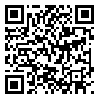BibTeX | RIS | EndNote | Medlars | ProCite | Reference Manager | RefWorks
Send citation to:
URL: http://payavard.tums.ac.ir/article-1-11-en.html
Background and Aim: Randomized controlled clinical trial is the most valid type of epidemiological studies for the treatment of diseases. The aim of the present article is to determine the subject area, type of intervention, and blinding methods used in this type of study design.
Materials and Methods: This is a cross-sectional descriptive study in which all the articles based on randomized controlled clinical trial were studied. The articles were all affiliated to Tehran University of Medical Sciences(TUMS) and indexed in PubMed by the end of the year 2010.
Results: Among the subject areas, most randomized controlled clinical trials(44 cases or 14%) were conducted in the field of Obstetrics and Gynecology. In terms of intervention type, the majority of the studied trials(214 cases or 68.2%) used drug intervention. And regarding the type of blinding, double-blinding was employed more than other blinding techniques(152 cases or 48.4%). On the whole, 125 cases(39.8%) of randomized controlled clinical trials were conducted through drug intervention simultaneous with double-blinding technique.
Conclusion: In different subject areas, the application of blinding techniques and type of intervention are somewhat related to research methodology and medical ethics. It seems that intervention type depends on subject area, and blinding technique is determined by the selected type of intervention.
| Rights and permissions | |
 |
This work is licensed under a Creative Commons Attribution-NonCommercial 4.0 International License. |





